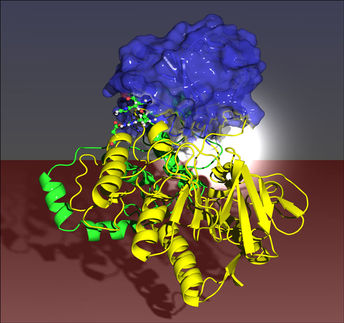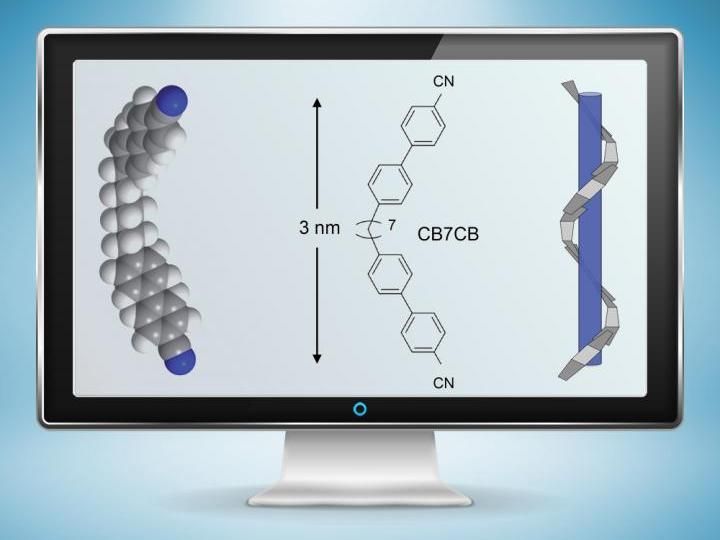Scripps Research team wins global race to achieve landmark synthesis of perplexing natural product
Compound's complexity had confounded chemists since discovery in 1993
In 1993 researchers discovered a chemical compound in a sponge off Palau, an island nation in the Pacific Ocean, that has shown anticancer, antibacterial, and antifungal pharmaceutical promise. But that wasn't its greatest allure, at least not for chemists.
This compound, called Palau'amine, is so chemically complex that finding a way to produce it in the laboratory became the most hotly pursued synthetic chemistry goal in modern history. Groups around the globe dedicated millions to the challenge, but it is a team of scientists from The Scripps Research Institute that has finally completed the quest.
Anonymous reviewers of the team's paper describing the achievement, which will be published as the cover article of an upcoming edition of the international journal Angewandte Chemie, called the work variously "a masterpiece," "spectacular," "a landmark," and "a spectacular synthetic achievement including unprecedented and previously 'unthinkable' transformations."
An Exquisite Target
Synthesizing Palau'amine is a daunting task because of two main features. First, it has a molecular framework with inner connections so bizarre that chemists have been taught in graduate school that they can't exist in nature. The most striking feature is a combination of two carbon rings sprinkled with nitrogen atoms that bond in a way that puts phenomenal strain on the molecule.
"It's so contorted that you wouldn't expect it to be possible," says Scripps Research chemist Phil Baran, Ph.D., who led the team that made the breakthrough.
To add to the fun, Palau'amine is exceedingly fragile. For instance it falls apart if exposed to the wrong pH level. All told, developing a synthesis method proved to be the chemical equivalent of a treasure hunt through booby-trapped terrain where one false move sends the quarry up in smoke.
Baran's lab had been working on the Palau'amine challenge ever since he arrived at Scripps Research as a faculty member more than six years ago. During that time, the group developed techniques to synthesize several compounds related to Palau'amine, but the ultimate goal remained elusive. Numerous attempts, however, added important information and techniques that would ultimately prove critical.
The Quest Heats Up
Increasingly desperate and working with handheld molecular models, Baran and his team eventually hit on the idea of a molecule dubbed macro-Palau'amine that he felt his group could create. If so, he became convinced it could be transformed into Palau'amine. As work to create macro-Palau'amine heated up, graduate students, including the new paper's first authors graduate student Ian Seiple and Research Associate Shun Su, Ph.D., would eventually set up a cot in the laboratory and begin to work around the clock.
"It was the Scripps Hilton for a long time," says Baran, "and when it was finally done we were all elated, as you might imagine."
The group's earlier trials produced intermediate compounds that took them part of the way to Palau'amine, but there was still much to do. One of the most significant later advances that allowed them to succeed was the invention of an oxidation reaction helped along by silver. The reaction could place an essential group of oxygen and hydrogen atoms known as a hydroxyl at a particular spot on an emerging molecule with seemingly laser-guided precision. The reagent that the Scripps Research team developed for this purpose, silver picolinate, has now been commercialized by Aldrich.
"The technique had no precedent, but we knew that if it could be invented it would dramatically simplify everything," says Baran and it did.
This silver-mediated oxidation stabilized an intermediate molecule enough to allow five final steps to macro-Palau'amine. Once the team had that, the final transformation to Palau'amine proceeded as predicted and with such simplicity it seemed almost anticlimactic macro-Palau'amine had only to be treated with acid and the quest was finally complete. The Baran group had synthetically produced Palau'amine for the first time ever.
Next Steps
Given the difficulty of the task, the synthesis would have been impressive at any length. But, with 25 steps currently involved, it would be difficult to make substantial quantities of Palau'imine for commercial purposes. So the Baran team has already devised a scheme that could shave as many as ten steps from the overall synthesis process and hopes to ultimately provide substantial quantities of the compound to other researchers and commercial partners that will pursue Palau'amine's pharmaceutical potential.
To Baran, the project has already led to substantial benefits regardless of whether the compound or some derivative of it ever shows commercial success. Pharmaceutical companies are already using the silver oxidation technique to produce other potential drugs, students have received an invaluable, and other lessons learned about synthesizing challenging compounds will ultimately be applied in numerous other quests.
"I see those types of advances as being the most useful things to come out of endeavors like this," says Baran.
Palau'amine tops a string of achievements for the Baran lab, most recently solving the two-decade old riddle of how to synthesize a compound called vinigrol that lowers blood pressure in rats. Results of this work were published in October 2009 in the Journal of the American Chemical Society.
While Palau'amine had achieved a special and rare prominence as an apex challenge, it's just one in a sea of other opportunities according to Baran, all with important potential benefits of their own.
"In my opinion there are a lot of treasures out there like Palau'amine," he says, "There are so many amazing challenges in chemical synthesis waiting to be solved."
Other news from the department science
Most read news
More news from our other portals
See the theme worlds for related content
Topic world Synthesis
Chemical synthesis is at the heart of modern chemistry and enables the targeted production of molecules with specific properties. By combining starting materials in defined reaction conditions, chemists can create a wide range of compounds, from simple molecules to complex active ingredients.

Topic world Synthesis
Chemical synthesis is at the heart of modern chemistry and enables the targeted production of molecules with specific properties. By combining starting materials in defined reaction conditions, chemists can create a wide range of compounds, from simple molecules to complex active ingredients.






























































